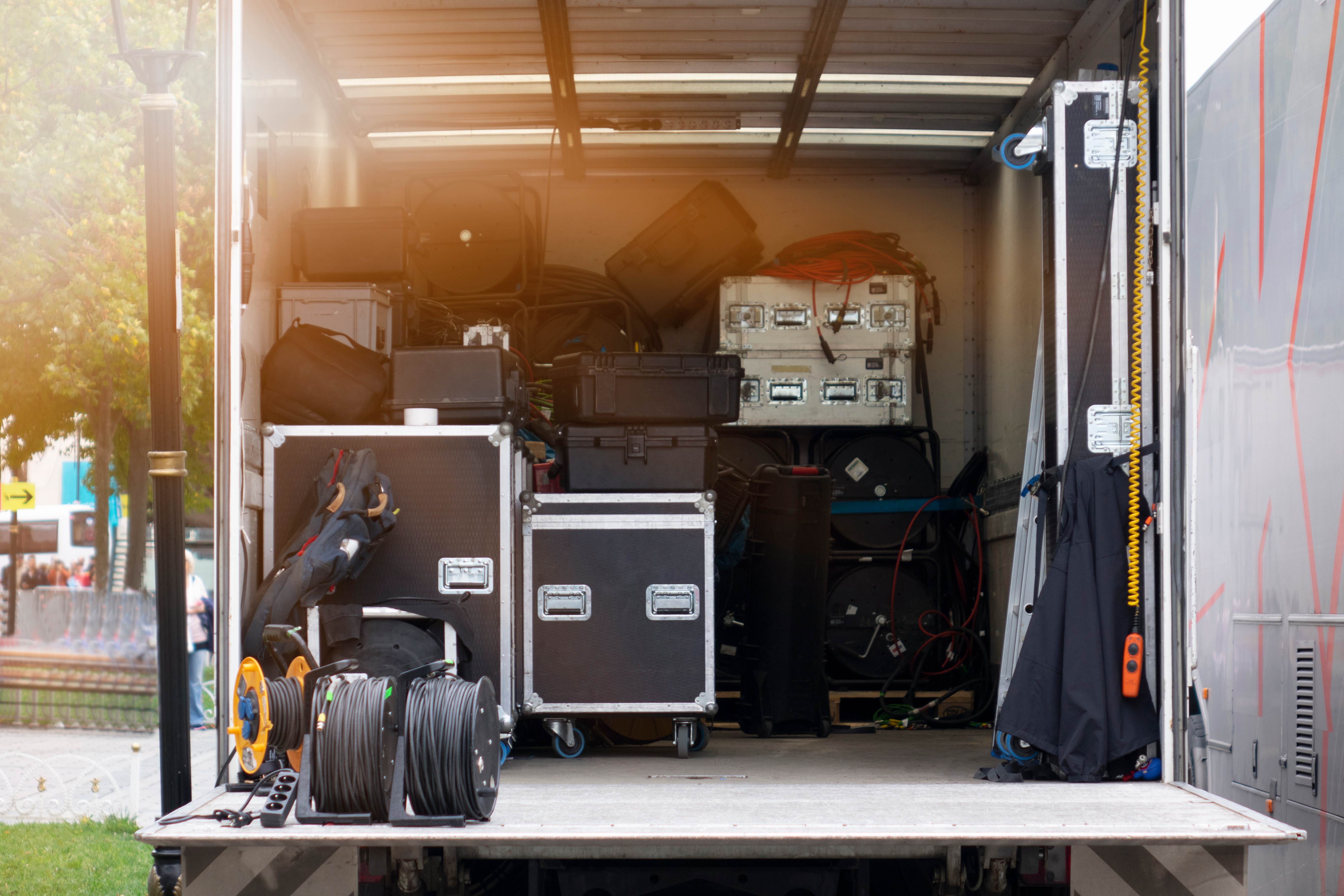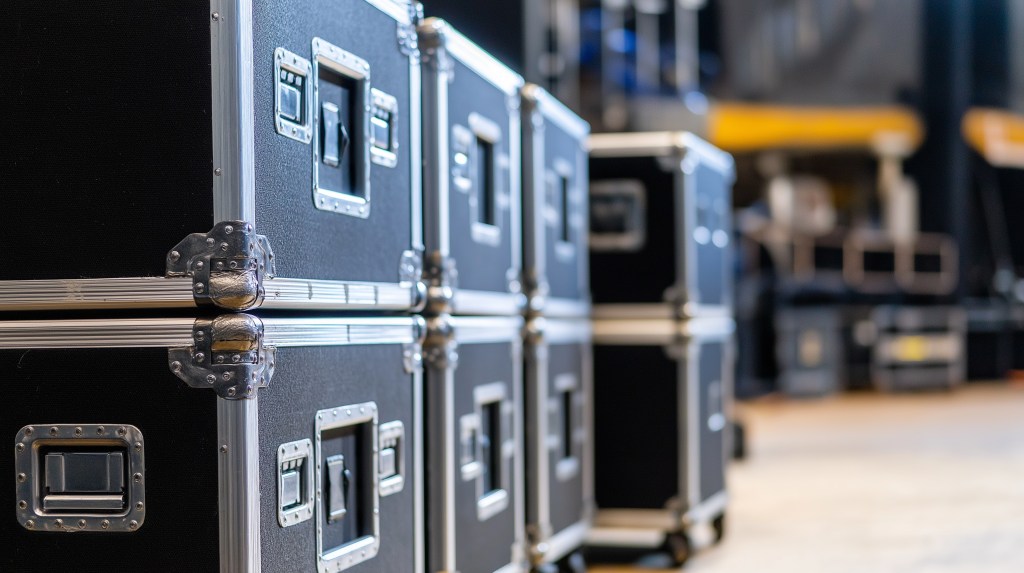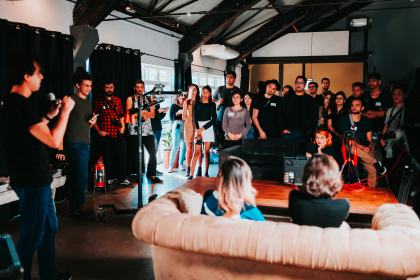
Understanding Event Equipment Insurance: Key Benefits and Coverage
Events rely on a complex ecosystem of assets, ranging from AV boards and lighting arrays to staging, generators, and the technology that powers it all. Whether these assets are owned or rented, they represent a significant investment of money and are often deployed across various land locations, from warehouses to event venues. That’s why securing…
Events rely on a complex ecosystem of assets, ranging from AV boards and lighting arrays to staging, generators, and the technology that powers it all. Whether these assets are owned or rented, they represent a significant investment of money and are often deployed across various land locations, from warehouses to event venues. That’s why securing event equipment insurance, tools and equipment insurance, and inland marine insurance is essential.
These specialized policies help ensure your gear is covered, not just on-site, but also while in storage or in transit. With replacement cost coverage and protection against physical loss or damage, these policies support fast recovery and seamless execution. Brokers play a key role in helping clients set the right limits and terms with minimal friction, ensuring every piece of equipment is protected throughout the full lifecycle of the event.
What Event Equipment Insurance Typically Covers
Event equipment insurance, often structured under property or inland marine insurance forms, provides essential protection for the tools and technology that power your event. Coverage typically includes theft, damage from an accident, fire, vandalism, and certain weather-related incidents. Many policies also offer equipment breakdown protection for sudden internal failures, such as a generator malfunction or a lighting board short-circuit.
Depending on the policy structure, coverage may be offered as scheduled equipment coverage for individually listed items or as blanket coverage that protects a wide array of assets under a single limit. It’s also important to confirm whether your policy includes mobile equipment and equipment in transit coverage, which protects gear while moving between storage, venues, and job sites. Clarifying these details ensures your event assets are covered wherever they go, reducing risk, minimizing disruption, and keeping operations on track.
Equipment Breakdown Versus Property Damage
Safeguarding high-value event assets, such as mixers, LED walls, POS systems, refrigeration units, and power distribution equipment, requires a clear understanding of the difference between property damage coverage and equipment breakdown insurance. Property forms typically respond to external perils like fire, theft, vandalism, or weather-related damage.

However, when the issue originates internally, such as a sudden mechanical failure, electrical arcing, or a power surge, equipment breakdown insurance steps in to cover the accident.
This type of coverage is specifically designed to address internal failures, offering targeted protection that complements traditional property insurance. By combining both types of policies, event professionals can ensure their resources are protected across a wide range of scenarios.
This approach supports operational continuity, minimizes financial loss, and allows for tailored solutions that meet the unique needs of each event.
Insurance Policies for Rented and Leased Event Gear: What You Need to Know
In the fast-paced world of event production, short-term rentals and cross-hired equipment are common, and so are the risks that come with them. That’s why it’s essential to confirm your policy includes coverage for rented and leased equipment, along with any applicable sublimits or time restrictions. Whether you’re insuring LED walls, sound systems, or staging, your scheduled equipment coverage should accurately reflect the gear in use and how it fits into your broader business property strategy.
Many rental houses require loss payee endorsements, meaning they must be listed on the policy to receive compensation in the event of a claim. It’s also important to ensure that your certificate of insurance includes the correct interests and replacement cost terms. This helps avoid delays, disputes, and unexpected costs.
When coverage extends to mobile equipment and gear in transit, between storage, venues, and job sites, you gain peace of mind knowing your event is protected at every stage. With the right coverage in place, you safeguard your operations and maintain strong vendor relationships.
AV, Lighting, And Production Technology

High-value electronics like AV mixers, LED walls, lighting consoles, POS systems, and power distribution units are the backbone of modern events, but they’re also highly sensitive. These systems are vulnerable to power surges, overheating, and micro component failure, which often fall outside the scope of standard property coverage. That’s where equipment breakdown insurance becomes essential.
Unlike property forms that respond to external threats classified as a covered peril, such as fire or theft, equipment breakdown insurance addresses internal mechanical and electrical failures that can halt operations unexpectedly.
This specialized coverage helps ensure fast recovery with options for data and media restoration, expedited repair or replacement, and extra expense coverage to offset disruptions. Many policies also reimburse on a replacement cost basis, allowing event professionals to recover quickly without depreciation setbacks. Pairing AV equipment insurance with lighting and sound equipment coverage ensures your event stays protected and on schedule, no matter what happens behind the scenes.
Staging, Rigging, And Temporary Structures
From towering trusses to mobile stages and lifts, the physical components of an event face constant exposure to impact, collapse, and unpredictable weather, especially during setup, strike, and showtime. These assets are frequently in motion, traveling between warehouses, trucks, and venues, which makes traditional property coverage insufficient for protecting against missing property or damage in transit.
That’s where inland marine insurance and equipment in transit coverage become essential. These policies are designed to safeguard mobile and temporary assets like staging, rigging equipment, lifts, and backline gear while in transit or temporarily located off-site.
For broader protection, blanket equipment coverage can ensure all assets are included under a single insurance policy, reducing administrative complexity and minimizing gaps in protection. When coverage extends to every stage of the event lifecycle, professionals can confidently protect their infrastructure from loss, damage, and costly delays, no matter where the gear goes.
Power, HVAC, and Generators at Events: How Contractor’s Equipment Insurance Supports Critical Infrastructure
Temporary power and climate control systems, like generators, chillers, and HVAC units, are mission-critical for live events. When one of these fails, the disruption can be immediate and costly. Often, the cause is an internal issue, such as a mechanical failure or electrical fault, rather than an external peril like fire or weather. That’s where equipment breakdown insurance and mechanical breakdown coverage come into play.
These policies respond to internal failures, including electrical arcing or overheating, that standard property insurance may not cover. Pairing this with business interruption and extra expense coverage ensures organizers can quickly fund emergency rentals, repairs, or workarounds to keep the event live.
Whether you’re relying on generator insurance to power a concert or cool a tented gala, having the right protection in place ensures resilience and continuity when it matters most.

Catering, Refrigeration, And Spoilage
Food and beverage vendors are essential to the event experience, relying on refrigeration equipment, warmers, and prep stations to deliver consistent quality. But when a compressor fails or a cooler breaks down, the result can be costly product loss and service disruption. These failures are often internal mechanical issues, not external perils, making equipment breakdown and mechanical breakdown coverage critical components of a comprehensive insurance policy.
To fully protect perishable goods, event organizers should add spoilage coverage tied to breakdown events. This ensures fast replacement of lost inventory and helps maintain continuity in catering operations. When spoilage is tied to a covered property loss, such as a breakdown or power outage, the right coverage can make all the difference in keeping the event running smoothly.
Pairing this with extra expense coverage allows for rapid sourcing of backup equipment or emergency food service solutions, ensuring the customers experience remains uninterrupted and vendors stay supported.
Transit, Storage, And Off-Premises Exposures
Event gear often spends as much time in transit and temporary storage as it does on stage. From trucks and trailers to third-party warehouses, these off-premises exposures present unique risks that standard property coverage may not fully address. That’s where inland marine insurance and event equipment insurance come into play, offering protection while loading, unloading, and transporting gear.
It’s important to confirm whether your policy includes theft coverage from vehicles, especially when parked overnight, and to understand any nighttime security requirements that may apply. Whether your equipment is en route to a venue or stored between events, having the right coverage ensures continuity and peace of mind across every leg of the journey.
Depending on the policy, losses may be reimbursed on an actual cash value basis or with replacement cost terms, which can significantly impact recovery timelines and budgeting. By aligning your coverage with the value of your resources, you can better protect your investment and keep operations running smoothly.
Choosing Limits, Deductibles, And Valuation
Event gear inventories fluctuate with new purchases, rentals, and seasonal peaks, making it essential to tailor insurance coverage accordingly. Start by using scheduled equipment coverage for high-value items like AV systems or staging gear, and apply blanket equipment coverage for the rest to ensure broad protection. Prioritize replacement cost coverage to avoid depreciation losses and enable fast recovery when equipment is damaged or lost.
Pay close attention to deductibles and sublimits, especially for sensitive categories like electronics or rented gear, which may have lower thresholds or time-based restrictions. Align deductibles with the client’s cash flow to strike the right balance between affordability and risk.
Whether you’re structuring event equipment insurance or tools and equipment insurance, these choices help build a resilient, responsive policy that adapts to the dynamic nature of live event production.

Common Event Claim Scenarios and How Inland Marine Coverage Helps Close the Gaps
Live events are dynamic environments, and claims can arise from a variety of unexpected situations. Picture a mixer failure caused by a power surge, a textbook example for equipment breakdown insurance with power surge coverage. Or imagine camera lenses stolen from a production truck, which would be covered under property insurance with dedicated theft protection.
Then there’s the dreaded generator seizure mid-show, where both mechanical breakdown coverage and extra expense provisions are essential to fund emergency rentals and keep the event running.
These real-world scenarios highlight how combining coverage forms, such as generator insurance, equipment breakdown, business interruption, and extra expense, helps close gaps and accelerate recovery. For brokers and planners, understanding how these policies intersect is key to building resilient insurance programs that protect both gear and timelines, ensuring the show goes on no matter what.
Placing With A Specialty Market
When it comes to insuring live events, working with a specialty insurance market can make all the difference. Event risks benefit from carriers and partners who understand how to bundle inland marine insurance with equipment breakdown insurance under one streamlined program.
These specialists offer fast turnaround on certificates of insurance (COIs), flexible endorsements, and the ability to accommodate multi-venue schedules, tight timelines, and high-tech gear.
Whether your client needs coverage for AV systems, generators, or climate control equipment, placing with a market that understands the nuances of event production ensures better protection, fewer coverage gaps, and smoother execution. It’s not just about coverage, it’s about confidence, speed, and precision.
Underwriting Essentials Brokers Should Gather

Securing competitive terms for event equipment insurance begins with clean, detailed underwriting information. Brokers should compile a current equipment inventory that includes both owned and frequently rented gear, complete with serial numbers, replacement values, and details on age and maintenance records for critical items like generators, AV systems, and climate control units. This information helps underwriters understand the full scope of business operations and the value of covered assets.
In addition to equipment details, underwriters need insight into transit and security protocols, venue types, and the client’s prior loss history to accurately assess risk. The more complete and organized the submission, the faster carriers, especially those in the specialty market, can issue meaningful endorsements and responsive certificates of insurance policy. A well-prepared submission not only accelerates quoting but also positions your client for stronger protection, better pricing, and more resilient coverage.
Coordinating With Other Event Policies
To build a truly resilient event insurance policy, equipment coverage must be aligned with other key protections, especially general liability, auto, and venue-specific requirements. This coordination helps avoid gaps and ensures smooth claims handling across all stages of the event. Pay close attention to additional insured language, hold harmless agreements, and waiver of subrogation provisions, making sure they complement how gear moves and who controls it at each phase, from transport and setup to operation and teardown.
Integrating inland marine insurance with broader liability policies ensures that every stakeholder is covered and every contract requirement is met. For brokers, aligning these tools into a cohesive strategy is the final step in delivering a high-performance insurance solution that protects both the event infrastructure and the business behind it.
Sources:
https://www.progressivecommercial.com/business-insurance/tools-and-equipment-insurance/
https://www.thehartford.com/small-business-insurance/equipment-breakdown-insurance
https://www.insurancebusinessmag.com/us/guides/what-does-equipment-insurance-cover-454613.aspx
https://www.nextinsurance.com/commercial-property-insurance/edu/equipment-breakdown-coverage/
https://www.bpj.com/resources/blog/equipment-breakdown-insurance-2/
https://www.nationwide.com/lc/resources/small-business/articles/what-is-equipment-breakdown-insurance



